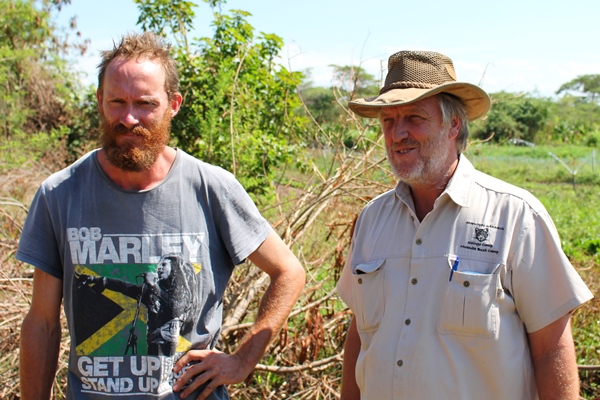Intro and piece by Seb Scott on Green manure
Notice: Undefined index: catFilterList in /home/zambi/public_html/wp-content/plugins/wp-likes/api.php on line 243
Pathway to Green Prosperity – Rainbow Newspaper Zambia Limited
Edition 155 for Thursday, 3rd April 2025
Last week I Rolf Shenton, presented a transition plan in which Zambia could graduate from expensive and destructive inorganic fertiliser to a manure based agriculture. I described a few ways of managing livestock manure that can conserve far more nutrients than the current practices which leaves it exposed to the sun and rain until planting time.
This week before I embarrass myself, I have asked my colleague Sebastian Scott to talk about green manure and the principles he has developed to make it far more effective. Over to Seb!
Over the past 40 years, scientists around the world have been trying to better understand one of the oldest farming practices known to man. Use of plants grown to improve the soil and feed our crops are known as green manures. These crops are usually made up of plants in the legume family, as these are the only plants that can, with help from soil bacteria, take nitrogen from the air, and use it for themselves.
All farmers know that legumes do a good job of growing without fertilizer, and this us why – they make their own.
Traditionally, here in Zambia, land was taken out of production for a season to grow a green manure like velvet bean (nkhasi mudzi, chitedzi, mabingabinga) or sunnhemp (sanyembe). This would then be ploughed into the soil when it was ready, then farmers would plant a crop that needed lots of soil fertility, such as maize.
This practice took a back seat with the arrival of cheap fertilizer in the 1960s and 70s. Fertilizers being more attractive as they don’t need the farmer to take land out of production for a season.
With recent increases in fertilizer costs and soils loosing their natural fertility, green manure is becoming interesting again.
If we look at the latest science about green manures, there are a few important things to consider for anyone wishing to use this cheap method of ‘growing fertilizer’:
1. The best time to apply green manure to a maize or sorghum crop is at between 2 and 4 weeks after the crop has germinated.
2. The best way to make sure the nutrients are decomposed quickly and the nutrients are used by the crop is to lightly tury the leaves with soil.
3. The more green manure you have, the more fertilizer effect you will see.
If we look at these three ‘rules’, we can say we need, a green manure that will give us lots of leaves at the beginning of the rainy season, after planting the maize or sorghum, and it must be easy to manage and bury with soil.
There are only a few ways this can be done in our climate as we plant our crops as soon as the rains start. So how is it possible to have enough green manure at the beginning of the rains?
One way is to make the maize or sorghum rows wider than usual, say 120cm, so a green manure can be planted between the rows at the same time as the cash crop. They grow together and are then cut back at around 4 weeks to ‘feed’ the cash crop. This is best done with velvet bean or sunnhemp.
The other way is to plant crops that survive the long dry season. These are usually trees and shrubs with deep roots that allow them to find underground water.
These are grown in lines and 4 or 5 rows of crops are grown between them. This is known as alley cropping.
The cash crops are planted between the tree rows, then the trees are stripped of their leaves at between 2 and 4 weeks after planting to ‘feed’ the cash crop.
The best plants I know of to grow for this purpose are Gliricidia, Leauceana (Lukina) and pigeonpea.
It takes a bit of time to learn the techniques, but these approaches have been so effective for me on the farm that I cannot imagine growing crops without them! – Grassroots Trust

Sebastian Scott, with his friend and co-founder of the Grassroots Trust in Zambia, Rolf Shenton. The aim of the trust is to protect and develop traditional farming systems that help small-scale farmers to farm profitably and sustainably with minimal input costs.























